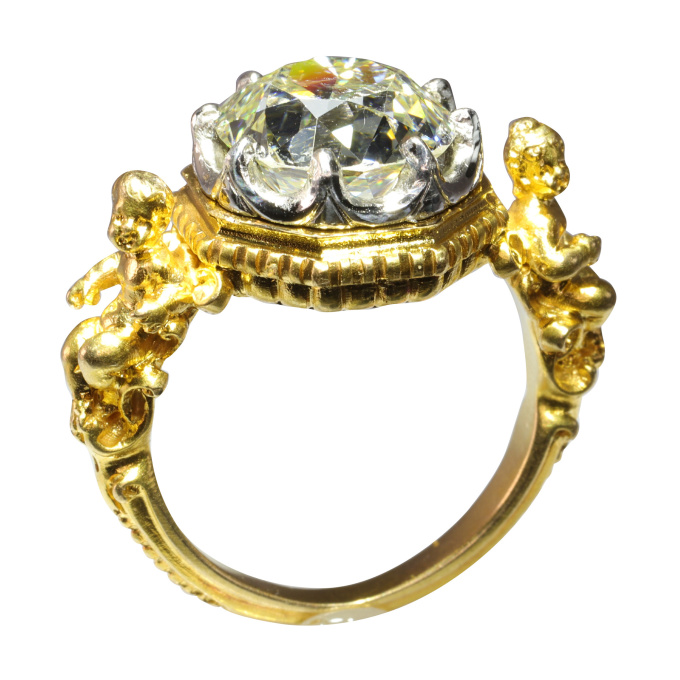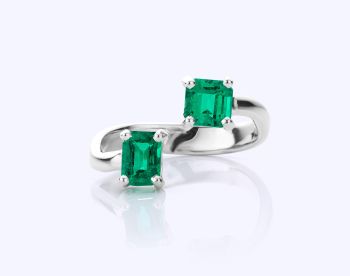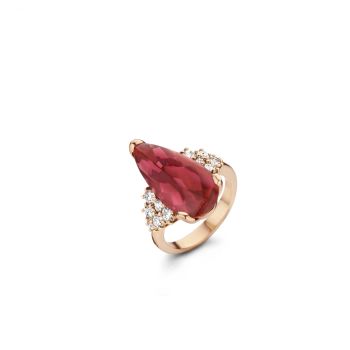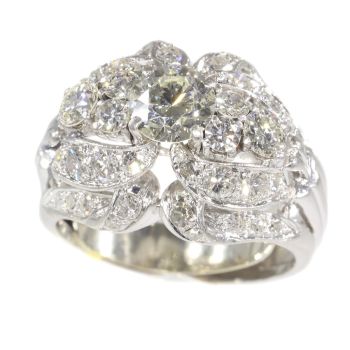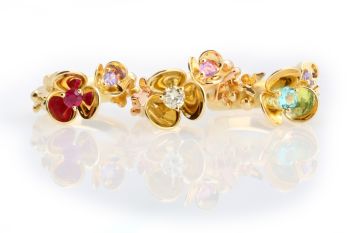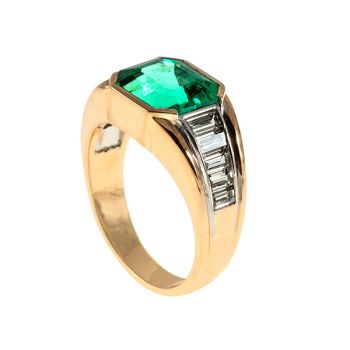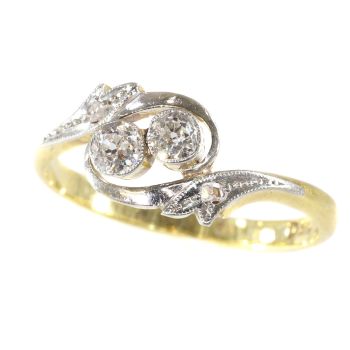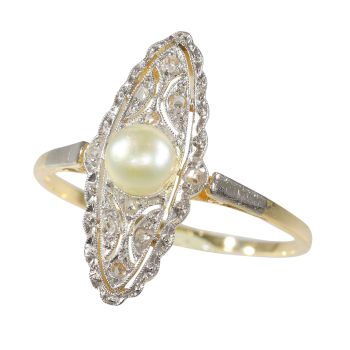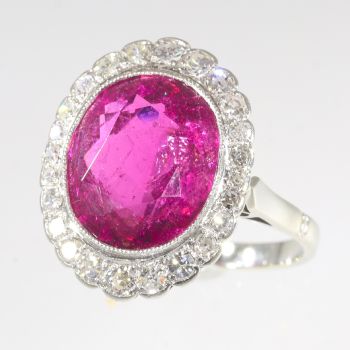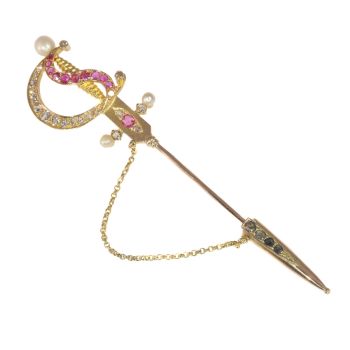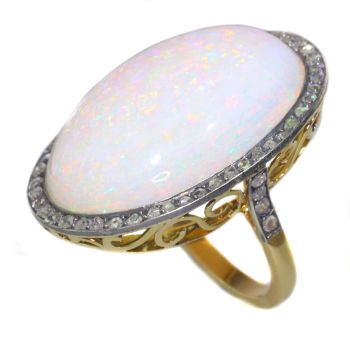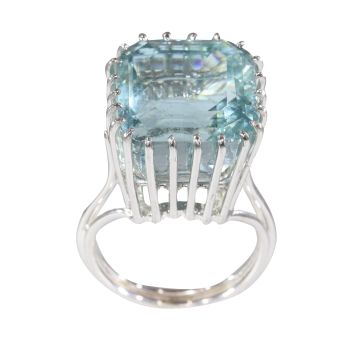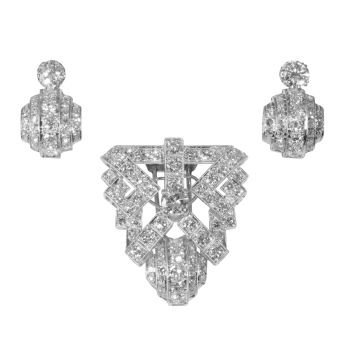Wièse's 4.86ct Diamond Ring, a Neo-Renaissance Legacy 1900
Wièse
Adin Fine Antique Jewellery
- Sobre arte
This Late-Victorian Neo-Renaissance ring by Jules Wièse is a museum-quality marvel in Haute Joaillerie. Crafted in France from 18K yellow gold and platinum, the ring incorporates two putti, symbolic of love and innocence, adding layers of historical andemotional meaning. At its core lies a 4.86-carat old European cut diamond. Wièse's craftsmanship is renowned, even cited in multiple academic books on 19th-century jewellery. Authenticated by Wièse's signature and French hallmarks, this ring is apinnacle of craftsmanship and a timeless heirloom, captivating collectors and destined for future generations to be amazed by its uniqueness.
Antique jewelry object group
ring
Condition
excellent condition
more info on our condition scale
Country of origin
France
Style
Victorian / Neo Renaissance
more info on styles
Style specifics
Neo-Renaissance jewellery refers to pieces inspired by the art and culture of the Renaissance period, which spanned from the 14th to the 17th centuries. Created primarily in the late 19th and early 20thcenturies, Neo-Renaissance jewellery aimed to replicate the grandeur and intricacy of its historical predecessor. Artisans of this movement often utilised traditional materials like gold, enamels, and precious gemstones, meticulously crafting them into elaborate designs that featured a variety of motifs, such as mythological scenes, putti, and intricate floral patterns.
The Neo-Renaissance movement was largely a European phenomenon, with France being a key player in its development. Renowned jewellers like Jules Wièse elevated the craft to new heights, creating pieces that were not mere replicas but original works of art that incorporated Renaissance elements. These jewellery pieces were considered the epitome of luxury and sophistication, valued not just for their materials but also for their exquisite craftsmanship and detailed ornamentation. They are now highly sought after by collectors and can be seen as timeless heirlooms, capable of captivating future generations with their unique blend of history and artistry.
Period
ca. 1900
Events & facts of this era, poetry of this era, fashion of this era.
Source of inspiration
Renaissance
Theme
two putti, one male, one female
The use of two putti—one male, one female—could symbolise romantic or divine love, a union of opposites, or the harmony and balance achieved through such a union.
Material
18K yellow gold and platinum (touchstone tested)
more info on precious metals
Extra information
Louis Wièse was the son of famed 19th-century French jeweller Jules Wièse and continued his father's legacy of exceptional craftsmanship. Like his father, Louis excelled in creating intricate designs inspired by historical and religious themes. His work, often executed in gold and featuring detailed ornamentation, represents some of the finest examples of 19th-century French jewellery. Louis Wièse contributed to maintaining thefamily's esteemed reputation, with pieces today equally coveted by collectors and displayed in significant museums globally.
Diamonds
One old European cut diamond with an estimated weight of ± 4.86ct colour and clarity L, si1 (see pictures for HRD certificat)
Birthstones
Diamond is the birthstone (or month stone) for April.
more info on birthstones
Brand
Wièse
Signature
Wièse (see pictures)
Hallmarks
Wièse mastermark and the French control mark for 18K gold representing an eagle's head that was in use in France from about 1838. (see pictures for close ups)
more info on hallmarks
Dimensions
width top of ring 1,37 cm (0,54 inch)
see picture with a ruler in millimeters and inches
Weight
10,70 gram (6,88 dwt)
Ring size 52
more info on ring sizes
Adin Reference Nº
20027-0039
Copyright photography
Adin, fine antique jewellery
Sources
- Le Bijouterie Francaise au XIX Siècle par Henri Vever (volume 2 page 213 for similar ring)
- Henri Vever French Jewelry of the Nineteenth Century (page 1013)
- Jules Wièse und sien Atelier (similar rings in the book)
- Pariser Schmuck (page 49 for a ring in the same idea & page 44 for the Wièse mark)
- Dictionnaire des joailliers, bijoutiers et orfèvres en France de 1850 à nos jours By: L'École des Art Joailliers avec le soutien de Van Cleef & Arpels.
Additional information
our latest acquisitions
jewelry glossary
wall of fame
visit us in Antwerp
subscribe to our mailinglist
- Sobre artista
Na segunda metade do século XIX, os ourives começaram a inspirar-se cada vez mais em épocas passadas, abraçando artefactos antigos e medievais enquanto revivem técnicas há muito esquecidas. Na França, os estilos neogótico e renascentista ganharam popularidade particular, fundindo-se no que ficou conhecido como "cathédrale de estilo".
Um dos luminares deste movimento de design foi Jules Wièse (1818-1890). Fez a viagem de Berlim a Paris em 1839, iniciando carreira no renomado ateliê do joalheiro e ourives Froment-Meurice. Este artesão empreendedor rapidamente ascendeu na hierarquia, alcançando o cargo de gerente de oficina em 1844. No ano seguinte, deu o passo ousado de estabelecer sua própria oficina na rue Jean-Pain-Mollet, 7. Wièse logo conquistou um nicho distinto para si, especializando-se na criação de joias e objetos de arte com detalhes intrincados em prata e ouro.
Seu excelente trabalho artesanal não passou despercebido. Wièse recebeu elogios na Exposition Industrielle de 1849 e, em 1855, foi premiado com uma medalha de primeira classe na Exposition Universelle. Um crítico, comentando o seu trabalho na exposição de 1855, observou: “a importância das suas peças e das suas ousadas experiências revelam uma apreciação da arte e da beleza que merece reconhecimento do júri, mesmo nas obras mais despretensiosas”. A notável habilidade e originalidade de Wièse logo ganharam reconhecimento internacional quando ele foi homenageado com uma medalha de distinção na Grande Exposição de Londres de 1862.
O trabalho de Wièse foi uma fusão harmoniosa de motivos medievais e métodos artesanais tradicionais. Ele se inspirou na lenda arturiana, nos contos de cavalaria, na arquitetura gótica e em várias formas de arte da época. Suas joias geralmente apresentavam um acabamento de óxido de mercúrio cuidadosamente aplicado, conferindo-lhes uma aparência antiga e enegrecida. No caso de itens de ouro, às vezes era usado ruge de joalheiro para dar-lhes a aparência de tesouros recém-desenterrados.
Em 1880, Jules Wièse aposentou-se, passando as rédeas da oficina para seu filho, Louis. Descrito por Vever como "um artista excepcionalmente modesto e verdadeiramente talentoso", Louis continuou a produzir joias no estilo revivalista até o fechamento da empresa em 1923.
As joias de Wièse, conhecidas por sua excentricidade encantadora e artesanato requintado, continuam altamente cobiçadas e procuradas por colecionadores e conhecedores. Exemplos de seu trabalho podem ser encontrados em instituições conceituadas como o Museu Britânico, o Victoria & Albert Museum e o Musée des Arts Décoratifs de Paris.
Você está interessado em comprar esta obra de arte?
Artwork details
Related artworks
- 1 - 4 / 24
- 1 - 4 / 24
- 1 - 4 / 24
- 1 - 4 / 12


